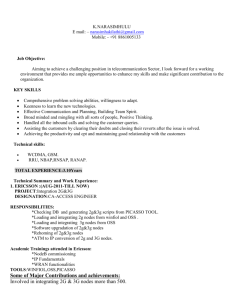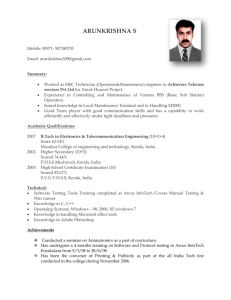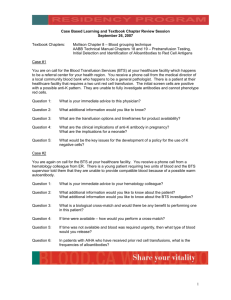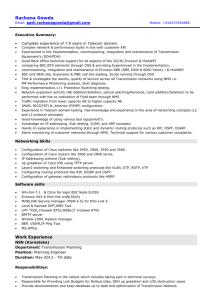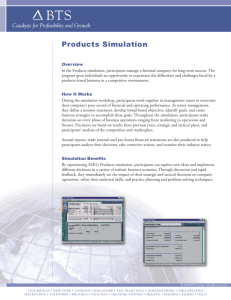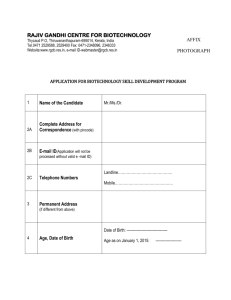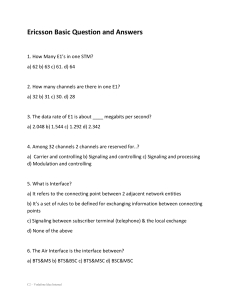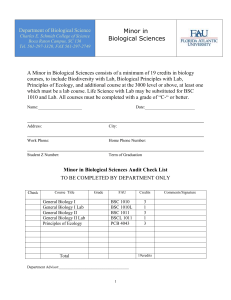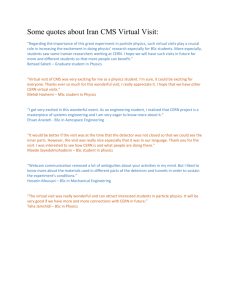Homework 2 (due 10/14/2013)
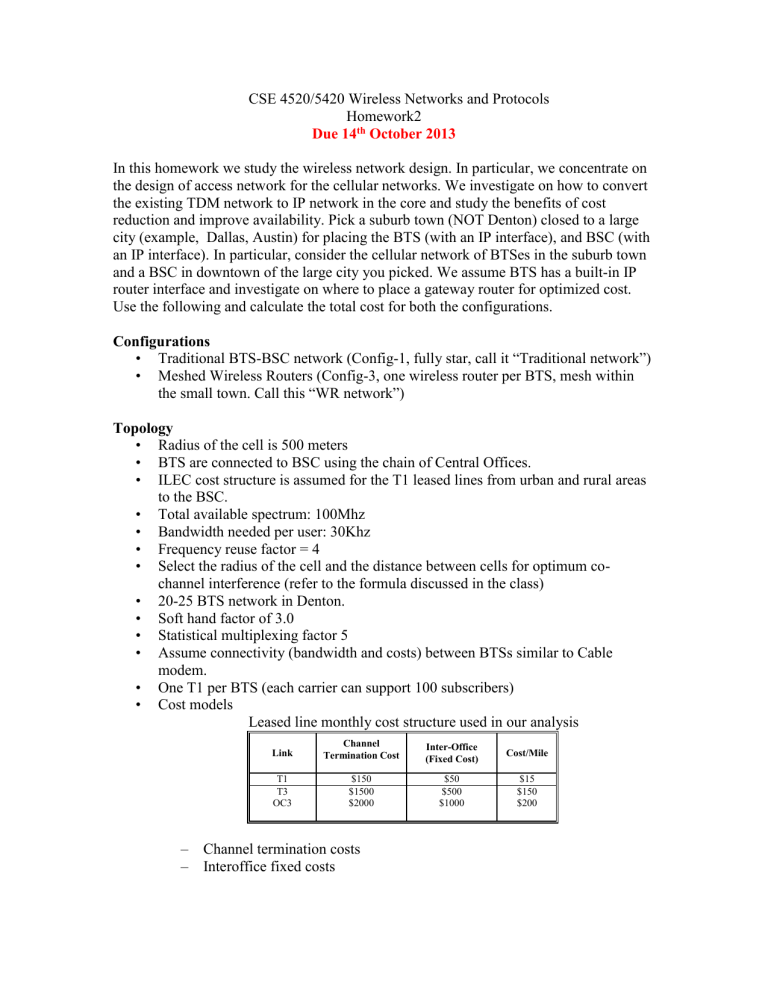
CSE 4520/5420 Wireless Networks and Protocols
Homework2
Due 14 th October 2013
In this homework we study the wireless network design. In particular, we concentrate on the design of access network for the cellular networks. We investigate on how to convert the existing TDM network to IP network in the core and study the benefits of cost reduction and improve availability. Pick a suburb town (NOT Denton) closed to a large city (example, Dallas, Austin) for placing the BTS (with an IP interface), and BSC (with an IP interface). In particular, consider the cellular network of BTSes in the suburb town and a BSC in downtown of the large city you picked. We assume BTS has a built-in IP router interface and investigate on where to place a gateway router for optimized cost.
Use the following and calculate the total cost for both the configurations.
Configurations
• Traditional BTS-BSC network (Config-1, fully star, call it “Traditional network”)
•
Meshed Wireless Routers (Config-3, one wireless router per BTS, mesh within the small town. Call this “WR network”)
Topology
•
Radius of the cell is 500 meters
•
BTS are connected to BSC using the chain of Central Offices.
• ILEC cost structure is assumed for the T1 leased lines from urban and rural areas to the BSC.
•
Total available spectrum: 100Mhz
•
Bandwidth needed per user: 30Khz
•
Frequency reuse factor = 4
•
Select the radius of the cell and the distance between cells for optimum cochannel interference (refer to the formula discussed in the class)
• 20-25 BTS network in Denton.
•
Soft hand factor of 3.0
•
Statistical multiplexing factor 5
• Assume connectivity (bandwidth and costs) between BTSs similar to Cable modem.
•
One T1 per BTS (each carrier can support 100 subscribers)
•
Cost models
Leased line monthly cost structure used in our analysis
Link
T1
T3
OC3
Channel
Termination Cost
$150
$1500
$2000
Inter-Office
(Fixed Cost)
$50
$500
$1000
Cost/Mile
$15
$150
$200
– Channel termination costs
–
Interoffice fixed costs
–
Per mile costs: Transport cost changes according to distance and the type of transport (T1/T3/OC3)
BSC
CO CO
BS BS
ER
BS
ER
WR Cloud
NOTE: If some data is not available in this homework description, assume it and clearly write down all your assumptions and inform the instructor accordingly.
Write a short report and describe the following:
Problem definition
Brief description of the two configurations
Map and location of all BTSs and BSC (Google for a real map from web)
Clearly show the distances between BTSs
If some data is not available in this homework description, assume it and clearly write down all your assumptions.
Brief description your formulas and calculation
Plots showing the cost versus no. of carriers (i.e., this relates to no. of subscribes supported by each carrier)
Describe what problems you faced (if any) while doing this analysis
Finally write how can improve your analysis/cost
